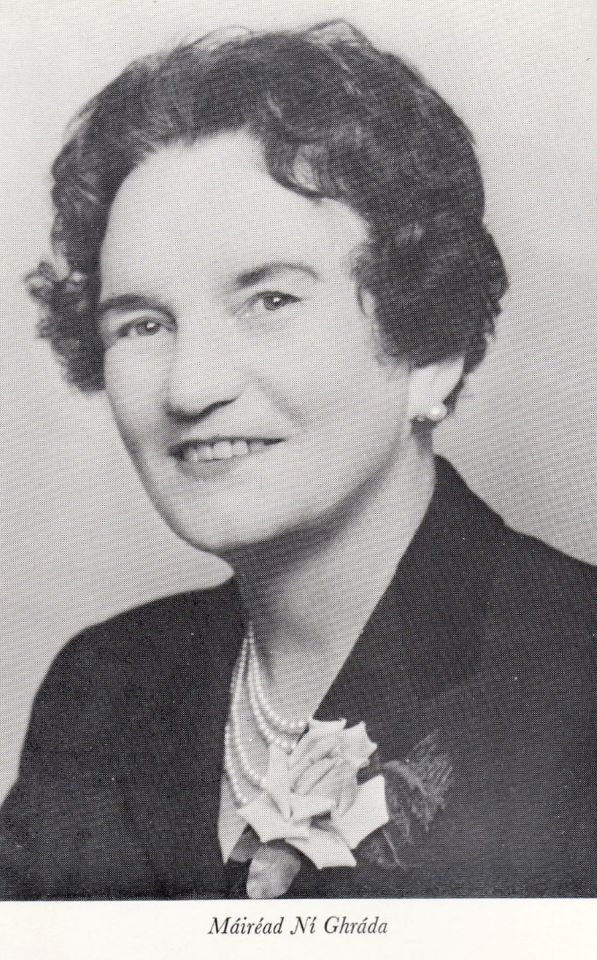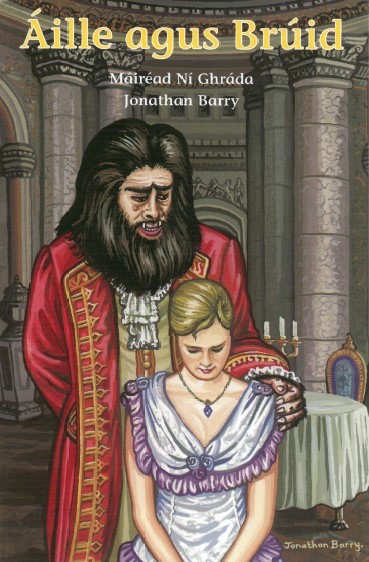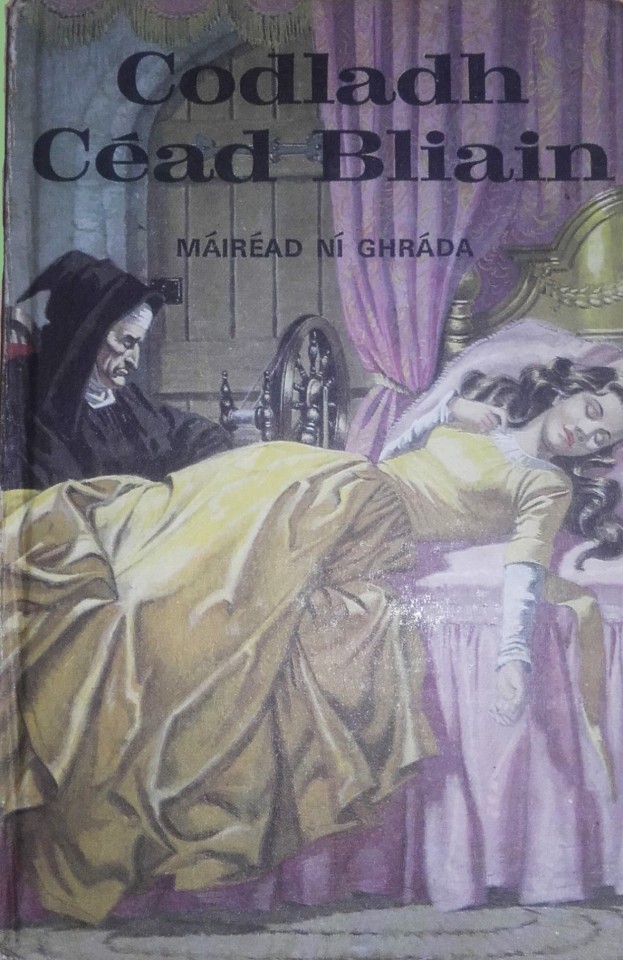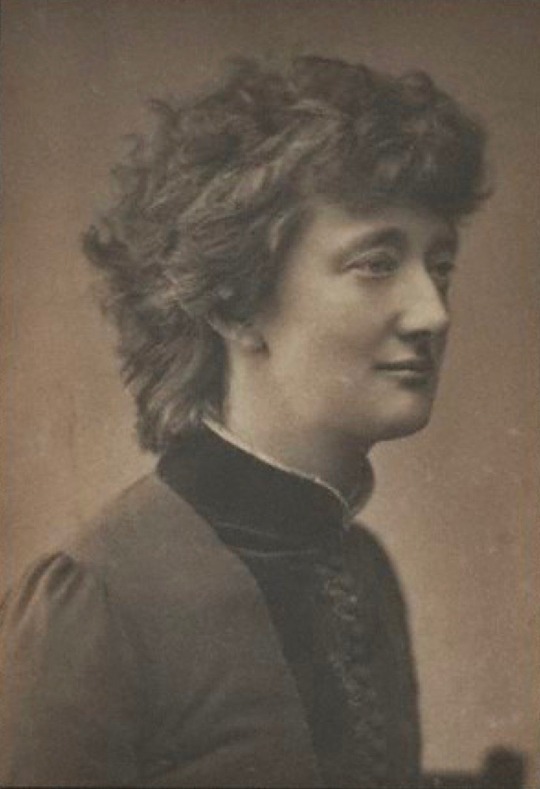#Cumann na nGael
Text
#OTD in 1929 – Death of historian and nationalist, Alice Stopford Green, in Dublin.
#OTD in 1929 – Death of historian and nationalist, Alice Stopford Green, in Dublin.
Born Alice Sophia Amelia Stopford in Kells, Co Meath, she lived in London where she met the historian John Richard Green. They were married in Chester on 14 June 1877. He died in 1883. John Morley published her first historical work Henry II in 1888.
In the 1890s she became interested in Irish history and the nationalist movement as a result of her friendship with John Francis Taylor. She was…

View On WordPress
#Alice Stopford Green#Anglo-Irish Treaty#Asgard#Co Meath#Cumann na nGael#Cumann na Saoirse#Kells#League of Freedom#Protestant#Roger Casement#St Stephen’s Green#The Howth Gun Running#The Making of Ireland#Ulster
7 notes
·
View notes
Text
Lúnasa—Féile Fhómhair na nGael
Roinnt stór focal ag bun an leathanaigh! Tá an leagan Béarla den alt le fáil anseo.
Lúnasa is ainm don 8ú mí den bhliain sa lá atá inniu ann. Ach tagann an t-ainm seo ó Lughnasadh nó 'Lug - nasad', seanfhéile tús an Fhómhair i measc na nGael. Deirtear gur chuir an seanrí diaga Lú tús le nós na féile nuair a chruinnigh sé tionól mór ('nasad' sa tseanGhaeilge) ar son a mháthar altramais, Tailtiú. Le linn Lúnasa, dhéanadh na Gaeil ceiliúradh ar tús an Fhómhair agus dhéantaí comóradh ar eachtraí Lú agus na dTuatha Dé Danann. Bhíodh aonaigh ollmhóra ar siúl ag na Gaeil ar fud na tíre agus an ceann ba mhó i dTeamhar na Rí. Ba thréimhse ghnó, spraoi agus comórtais iad na haonaigh chéanna.
Cúlra
Rí diaga as an seanchas is ea Lú, tá na Tuatha Dé Danann agus na Fomhóraigh aige araon mar a mhuintir. Thug sé cath i dtaca leis na Tuatha Dé i gcoinne na bhFomhórach agus a sheanathair Balor i gCath Maighe Tuireadh. Chuir Lú deireadh leis an gcath nuair a scaoil sé piléar trí shúil Bhalor lena thabhall, á mharú agus ag déanamh scrios ar arm na bhFomhórach. B'í Tailtiú, máthair altramais Lú, a fuair bás ón tuirse tamall ina dhiaidh sin tar éis coillte a bhaint agus faichí is goirt lár na hÉireann a réiteach don talmhaíocht ar son na nGael. Bhunaigh Lú féile ar a son le linn tús tréimhse an Fhómhair. Is sa tréimhse chéanna a chuirtí an tAonach Tailteann i gcrích gach bliain.
Nósanna
B'ionann an tAonach agus tionól ollmhór le raidhse ghníomhaíochtaí éagsúla ar siúl lena linn. I measc na ngníomhaíochtaí a bhí an tráchtáil, taidhleoireacht, comhdhálacha, comórtais, cleamhnas agus deis chóisire. Bhíodh comórtas mór spóirt agus aclaíochta ann, cosúil le cluichí Oilimpeacha na nGael. Ghlac laochra, na stócaigh is láidre agus is cumasacha, páirt ar son a dtuatha. Dhéanadh na stócaigh óga iarracht gradam a tharraingt orthu féin, agus theastaigh ó gach taoiseach éacht agus cáil a bhaint amach dá thuath. Chloiseadh na taoisigh éagsúla na dlíthe nua a bhí ar gach éinne in Éirinn cloí leo. Thugadh faoin gcleamhnas, é sin le rá an grá a lorg do dhaoine; lánúineacha a chruthú agus póstaí a shocrú. Bhíodh comhdhálacha ag ollúna faoi gach aon réimse agus bhíodh lucht mór ann ag díol a n-earraí agus a seirbhísí. Is cinnte go raibh Lúnasa mar príomhdheis sóisialta sa bhliain chomh maith le cúis taistil chun bualadh le daoine nua seachas an gnáthshaol áitiúil sa tráth sin. D'fhreastalaíodh gach saghas duine ar an Aonach; taoisigh, ceardaitheoirí, draoithe, breithimh, laochra, filí, feirmeoirí, lianna, cosmhuintir—an saol uilig.
Oidhreacht
Tháinig athrú réidh ar nósanna agus deasghnátha Lúnasa le teacht na Críostaíochta, agus faoi dheireadh cuireadh críoch leis na tionóil le teacht na Normannach. Ach fiú amháin sa lá atá inniu ann, tarlaíonn roinnt imeachtaí poiblí móra le linn tréimhse Lúnasa. Titeann cluichí ceannais an CLG idir dheireadh mí Iúil agus lár mí Lúnasa gach bliain. Cuirtear Fleadh Cheoil na hÉireann ar siúl ag deireadh an tsamhraidh. Tarlaíonn an Comórtas Náisiúnta Treabhdóireachta tamall ina dhiaidh sin timpeall cónocht an fhómhair (21ú Meán Fómhair). Is ionann gach ceann acu seo agus tionól ollmhór; comórtas nó comhdháil le spraoi agus deis sóisialta. Tá siad cosúil leis na haonaigh ársa um Lúnasa, agus cé nach bhfuil an tAonach Tailteann féin ann a thuilleadh, tugann na mórócáidí seo léargas dúinn ar an gcineál fuinnimh agus fuadair is dócha a bhíodh ann.
Stór Focal
breitheamh = judge
ceardaitheoir = craftsperson
cleamhnas = matchmaking, arranging marriages
CLG (Cumann Lúthchleas Gael) = GAA (Gaelic Athletic Association)
cluichí ceannais = championship finals
Comórtas Náisiúnta na Treabhdóireachta = National Ploughing Championships
comhdháil = conference
cónocht an fhómhair = autumn equinox
cosmhuintir = regular folk
draoi = druid; spiritual leader
file = poet, bard, orator
is ionann...agus... = ____ is equivalent to ____
lánúineacha = couples (lánúin = couple)
laoch = champion (of athletics or competitions), hero, warrior
lia = healer, physician
nós = tradition, habit
ollúna = experts, professors, learned people (ollamh = professor)
raidhse = a bounty, a great many things
sa lá atá inniu ann = in the present day (literally "in the day in which today is")
seachas = compared to
stócaigh = young men (stócach = youn man)
taidhleoireacht = diplomacy
taoiseach = chief
tráchtáil = commerce
1 note
·
View note
Text
Mairéad Ní Ghráda and An Triail
by Deirdre Swain

2021 marks the 50th anniversary of the death of Mairéad Ní Ghráda, playwright, broadcaster, teacher and Irish language advocate. She is best known for her Irish-language play, An Triail. Mairéad was born in Knockadangan, Kilmaley in Co. Clare on 23 December 1896. She was surrounded by Irish growing up. Her father, a farmer, was a native speaker of Irish, and her love of Irish and her life-long commitment to the revival of the language stemmed from his influence. He was immersed in the oral tradition, and he would often recite the poem, The Midnight Court by Brian Merriman. Mairéad was in despair about the state of the Irish language. She once said that she was happy that she was not in the generation that would lose the Irish language forever.
Her parents wanted her to terminate her education at the end of primary school so that she could work on the farm. This did not happen; instead, she went to secondary school in Ennis. She won several prizes as a student, and she was also awarded a County Council scholarship to University College Dublin (UCD), where she did a BA in Irish, French and English and an MA in Irish. While there, she was in Cumann na mBan and Conradh na Gaeilge. She was once put in prison for selling republican flags on Grafton Street, and she used to joke about this fifty years later. She worked as a teacher and then as private secretary to Ernest Blythe, who was a Cumann na nGael TD in the first Dáil of the new Irish Free State, and she continued to work for him during the Civil War when he was Minister for Finance. She married Richard Kissane, a senior Garda, in 1923, and they had two sons, Séamas and Brian. In 1926, Ireland’s first radio station, 2RN, which later became Radio Éireann, went on air. Ní Ghráda was employed as women’s organiser, compiling programmes for women and children. She became the station’s principal announcer in 1929. She was the first female radio announcer in Ireland, Britain and possibly in Europe, working as a broadcaster for nine years.
Ní Ghráda collaborated with Pádraig Ó Siochrú (better known as An Seabhac) at the Educational Council of Ireland school book section. She wrote many educational texts, including Progress in Irish. She became editor for the school textbooks publisher Brown and Nolan. She reviewed De Bhaldraithe’s Irish dictionary for the benefit of teachers. Such was her dedication that she continued to record work for school books when she was sick in hospital.

She took a great interest in children’s educational needs and had a great understanding of the minds of young people, as is evident from her plays. She wrote school drama texts based on mythology, the Bible, Aesop’s fables and the stories of the Fianna. She translated Peter Pan into Irish (Tír na Deo). She also wrote beautiful Irish versions of Ladybird fairytale stories including Goldilocks and the Three Bears (Na trí Bhéar), Sleeping Beauty (Codladh Céad Bliain), Cinderella (Luaithríona), Beauty and the Beast (Áille agus Brúid), Rapunzel (Rápúnzell) and Jack and the Beanstalk (Seán agus an Gas Pónaire), thereby promoting literacy in the Irish language.

Ní Ghráda’s great passion was theatre. Irish language theatre was in decline when she started producing plays, but she transformed this; her work generated an interest from people who did not even speak much Irish. She was bringing the language to people in an enjoyable way through the theatre. Her enormous contribution to Irish language theatre includes eleven original plays, which is more than that of any other playwright in Irish. Her play, Mícheál, based on Tolstoy’s story, Michael, won an Abbey Theatre award in 1933. She wrote her first original play Uacht for her students while working as a teacher in Kilmacud Cookery College. She never intended for this to be performed in a theatre, but when Mícheál MacLiammóir discovered it, he decided to produce it in the Gate Theatre.
Ní Ghráda wrote powerful plays that spoke the truth about Irish society at the time, discussing modern problems through the medium of Irish. She was very skilled at giving women, particularly young women, main character roles, something which very few playwrights did, apart from Seán O’Casey. Her plays made many people uncomfortable, because they discussed taboo subjects and contained themes that people were afraid to face, such as corrupt politicians and the cruel treatment of unmarried mothers in Ireland. She was completely ahead of her time in this regard.
Ní Ghráda’s best-known play is An Triail. It ranks with Brendan Behan’s An Giall as one of the most successful plays in the Irish language. This play is very relevant in the year that the Final Report of the Commission of Investigation into Mother and Baby Homes was published and at a time when the injustices against and rights of adopted people and their natural mothers are being discussed. It is thought to have been based on an incident which happened during Ní Ghráda’s childhood, when a girl who became pregnant was victimised while the father of her child escaped condemnation. Ní Ghráda rewrote part of An Triail, including the ending, under the guidance of Tomás MacAnna, the play’s director.
An Triail chronicles the treatment of a young girl, Máire, who has an affair with a married man, resulting in pregnancy. She is rejected by her mother and her two brothers. Her mother cares more about what the neighbours will think than she does for the welfare of her daughter and grandchild-to-be. Máire is rejected by society at large, and the only two characters who are sympathetic towards her are Mailí, who offers her and her baby refuge, and one of the lawyers at her trial. Everyone else judges and condemns her, and the father of the baby does not even want to meet his newborn daughter. In the end, she kills herself and her baby, whom it is clear she loves dearly. Máire claims that she killed her child because she was a girl; that by releasing her from life, she had freed her from the misery of being a female. The play revolves around this theme; Máire is heard voicing it at the very start of the play and again at the end. The question posed throughout is, “Why do things like this happen in Ireland?” Tomás MacAnna, the play’s director, praised An Triail as the precursor of women’s liberation. In a way, Ní Ghráda was putting Ireland on trial. Harold Hobson from the London Times newspaper gave it a very positive review, even though he did not speak Irish.
An Triail premiered at the Damer Theatre during the 1964 Dublin Theatre Festival. Shortly after this, Ní Ghráda translated it into English, and in 1965, the English version, On Trial, was performed in the Eblana Theatre. An Triail was adapted for TV, and it was entered in the 1965 Berlin TV festival. It was very rare for Irish-language plays to be made into TV programmes. The English version was published in 1966.
The play received favourable reviews, but it was very controversial when it was first performed. The idea that everyone was guilty of what happened to Máire and her baby because of a lack of Christianity and compassion upset people. Many were shocked by what they saw as an “immoral” play. The first performance of An Triail took place on 22 September 1964, just three days after the final instalment of Michael Viney’s series of articles in the Irish Times, collectively titled “No birthright”. This series was a critical investigation of the treatment of unmarried mothers in Ireland. In one article, Viney quotes an Irish mother who said “Tell my daughter never to set foot in Ireland again and that she has disgraced her family and her country”. In a second article, he mentions another unmarried girl who says that, on telling her mother that she’s pregnant, “it didn’t take long, I’m afraid, to think of what the neighbours would say”. Although it is difficult to imagine in today’s society, these quotes demonstrate that An Triail accurately reflected the prejudiced and cruel attitudes towards unmarried mothers at that time, and people’s preoccupation with neighbours’ opinions.
Mairéad Ní Ghráda spent the last two years of her life in hospital. She died on 13 June 1971.
The Reference Library holds a copy of the English-language version of the play, On Trial. It also houses a book about Mairéad Ní Ghráda and other Irish-language playwrights entitled An underground theatre: major playwrights in the Irish language, 1930-80 by Philip O’Leary. These can be viewed once the Reference Library re-opens.
References
Books
-Breathnach, D. and Ní Mhurchú, M. (1986). 1882-1982: Beathaisnéis a haon. Baile Átha Cliath: An Clóchomhar Tta.
-Ní, Ghráda, M. (c1978). An Triail/Breithiúnas: Dhá Dhráma. Baile Átha Cliath: Oifig an tSoláthair.
-Ní Mhurchú, M. and Breathnach, D. (1999). 1782-1881: Beathaisnéis [Maille le Forlíonadh le 1882-1982 Beathaisnéis agus le hInnéacs (1782-1999)]. Baile Átha Cliath: An Clóchomhar Tta.
-Titley, A. (2010). Scríbhneoirí faoi chaibidil. Baile Átha Cliath: Cois Life Teoranta.
Website articles
-Clare County Library (2021). Mairéad Ní Ghráda (1896-1971). 5 March. Available at: https://www.clarelibrary.ie/eolas/coclare/people/nighrada.htm (Accessed: 5 March 2021).
-Irish Theatre Institute (2021). Ócáid Chomórtha: A Celebration of Máiréad Ní Ghráda: Mairéad Ní Ghráda – Biography. 5 March. Available at: https://www.irishtheatreinstitute.ie/event.aspx?t=mir%C3%A9ad_n%C3%AD_ghrda&contentid=9289&subpagecontentid=9297 (Accessed: 5 March 2021).
-Irish Theatre Institute (2021). Ócáid Chomórtha: A Celebration of Máiréad Ní Ghráda: Production History. 5 March. Available at: https://www.irishtheatreinstitute.ie/event.aspx?t=an_triail_|_on_trial___production_history&contentid=9289&subpagecontentid=9302 (Accessed: 5 March 2021).
-Irish Theatre Institute (2021). Ócáid Chomórtha: A Celebration of Máiréad Ní Ghráda: Social Context. 5 March. Available at: https://www.irishtheatreinstitute.ie/event.aspx?t=social_context&contentid=9289&subpagecontentid=9303 (Accessed: 5 March 2021).
26 notes
·
View notes
Text
#OTD in 1929 – Death of historian and nationalist, Alice Stopford Green, in Dublin.
#OTD in 1929 – Death of historian and nationalist, Alice Stopford Green, in Dublin.
Born Alice Sophia Amelia Stopford in Kells, Co Meath, she lived in London where she met the historian John Richard Green. They were married in Chester on 14 June 1877. He died in 1883. John Morley published her first historical work Henry II in 1888.
In the 1890s she became interested in Irish history and the nationalist movement as a result of her friendship with John Francis Taylor. She was…

View On WordPress
#Alice Stopford Green#Anglo-Irish Treaty#Asgard#Co Meath#Cumann na nGael#Cumann na Saoirse#Kells#League of Freedom#Protestant#Roger Casement#St Stephen’s Green#The Howth Gun Running#The Making of Ireland#Ulster
6 notes
·
View notes
Text
#OTD in 1929 – Death of historian and nationalist, Alice Stopford Green, in Dublin.
#OTD in 1929 – Death of historian and nationalist, Alice Stopford Green, in Dublin.
Born Alice Sophia Amelia Stopford in Kells, Co Meath, she lived in London where she met the historian John Richard Green. They were married in Chester on 14 June 1877. He died in 1883. John Morley published her first historical work Henry II in 1888.
In the 1890s she became interested in Irish history and the nationalist movement as a result of her friendship with John Francis Taylor. She was…
View On WordPress
#Alice Stopford Green#Anglo-Irish Treaty#Asgard#Co Meath#Cumann na nGael#Cumann na Saoirse#Kells#League of Freedom#Protestant#Roger Casement#St Stephen’s Green#The Howth Gun Running#The Making of Ireland#Ulster
1 note
·
View note
Text
#OTD in 1929 – Death of historian and nationalist, Alice Stopford Green, in Dublin.
#OTD in 1929 – Death of historian and nationalist, Alice Stopford Green, in Dublin.

Born Alice Sophia Amelia Stopford in Kells, Co Meath, she lived in London where she met the historian John Richard Green. They were married in Chester on 14 June 1877. He died in 1883. John Morley published her first historical work Henry II in 1888.
In the 1890s she became interested in Irish history and the nationalist movement as a result of her friendship with John Francis Taylor. She was…
View On WordPress
#Alice Stopford Green#Anglo-Irish Treaty#Asgard#Co Meath#Cumann na nGael#Cumann na Saoirse#Kells#League of Freedom#Protestant#Roger Casement#St Stephen’s Green#The Howth Gun Running#The Making of Ireland#Ulster
5 notes
·
View notes
Text
#OTD in 1929 – Death of historian and nationalist, Alice Stopford Green, in Dublin.
#OTD in 1929 – Death of historian and nationalist, Alice Stopford Green, in Dublin.
Born Alice Sophia Amelia Stopford in Kells, Co Meath, she lived in London where she met the historian John Richard Green. They were married in Chester on 14 June 1877. He died in 1883. John Morley published her first historical work Henry II in 1888.
In the 1890s she became interested in Irish history and the nationalist movement as a result of her friendship with John Francis Taylor. She was…
View On WordPress
#Alice Stopford Green#Anglo-Irish Treaty#Asgard#Co Meath#Cumann na nGael#Cumann na Saoirse#Kells#League of Freedom#Protestant#Roger Casement#St Stephen’s Green#The Howth Gun Running#The Making of Ireland#Ulster
2 notes
·
View notes
Text
#OTD in 1929 – Death of historian and nationalist, Alice Stopford Green.
#OTD in 1929 – Death of historian and nationalist, Alice Stopford Green.
Born Alice Sophia Amelia Stopford in Kells, Co Meath, she lived in London where she met the historian John Richard Green. They were married in Chester on 14 June 1877. He died in 1883. John Morley published her first historical work Henry II in 1888. In the 1890s she became interested in Irish history and the nationalist movement as a result of her friendship with John Francis Taylor. She was…
View On WordPress
#Alice Stopford Green#Anglo-Irish Treaty#Asgard#Co Meath#Cumann na nGael#Cumann na Saoirse#Kells#League of Freedom#Protestant#Roger Casement#St Stephen’s Green#The Howth Gun Running#The Making of Ireland#Ulster
0 notes